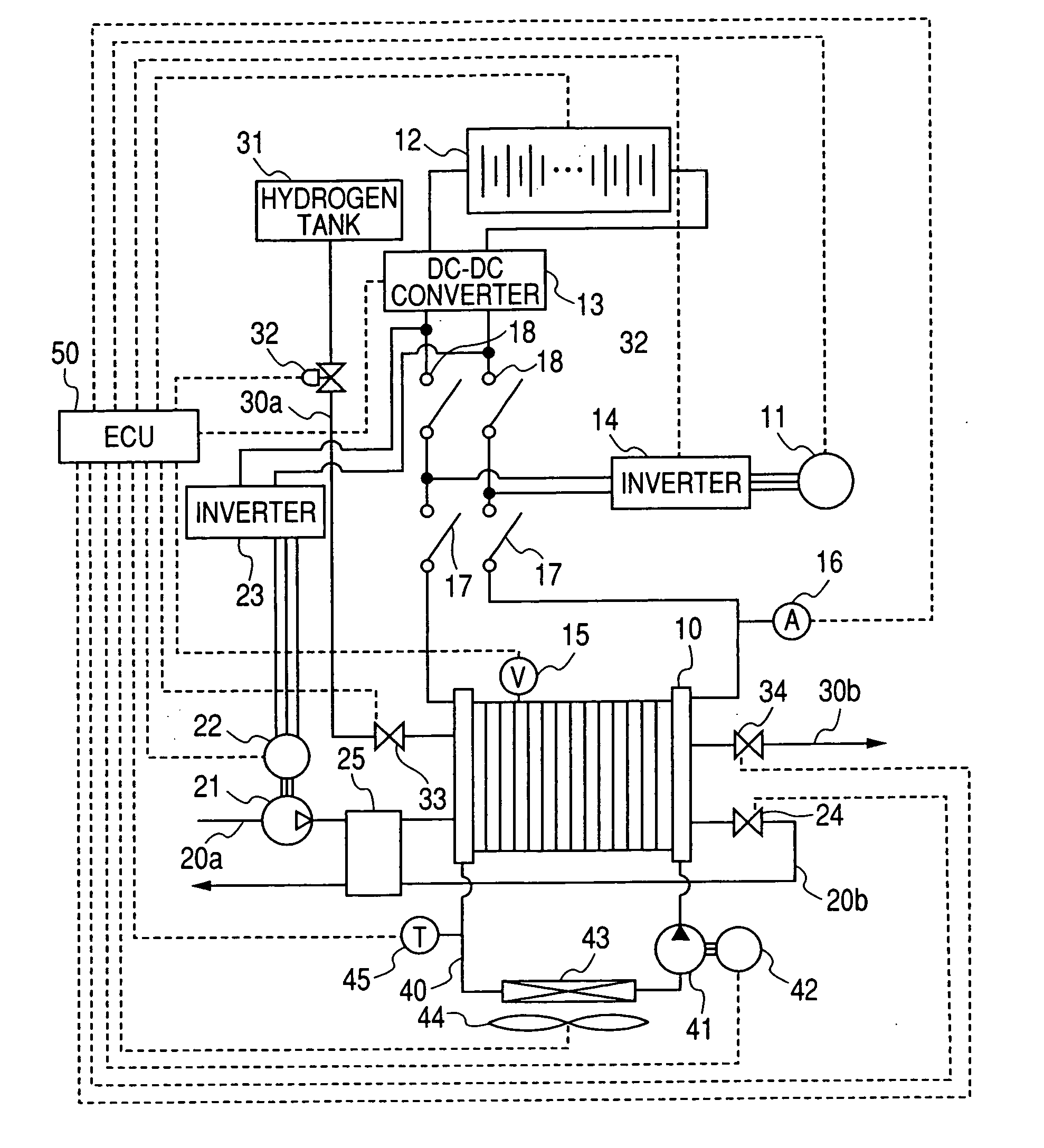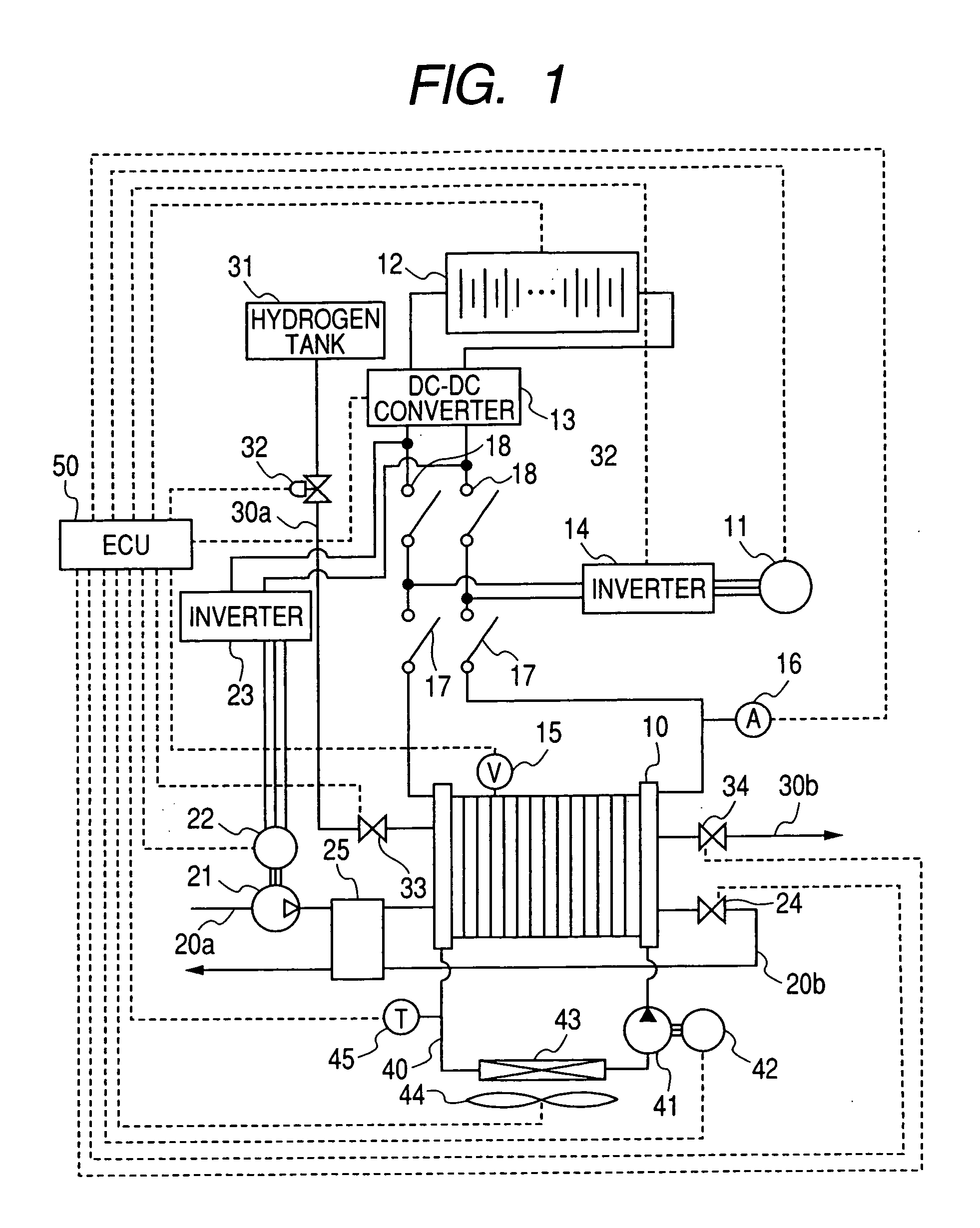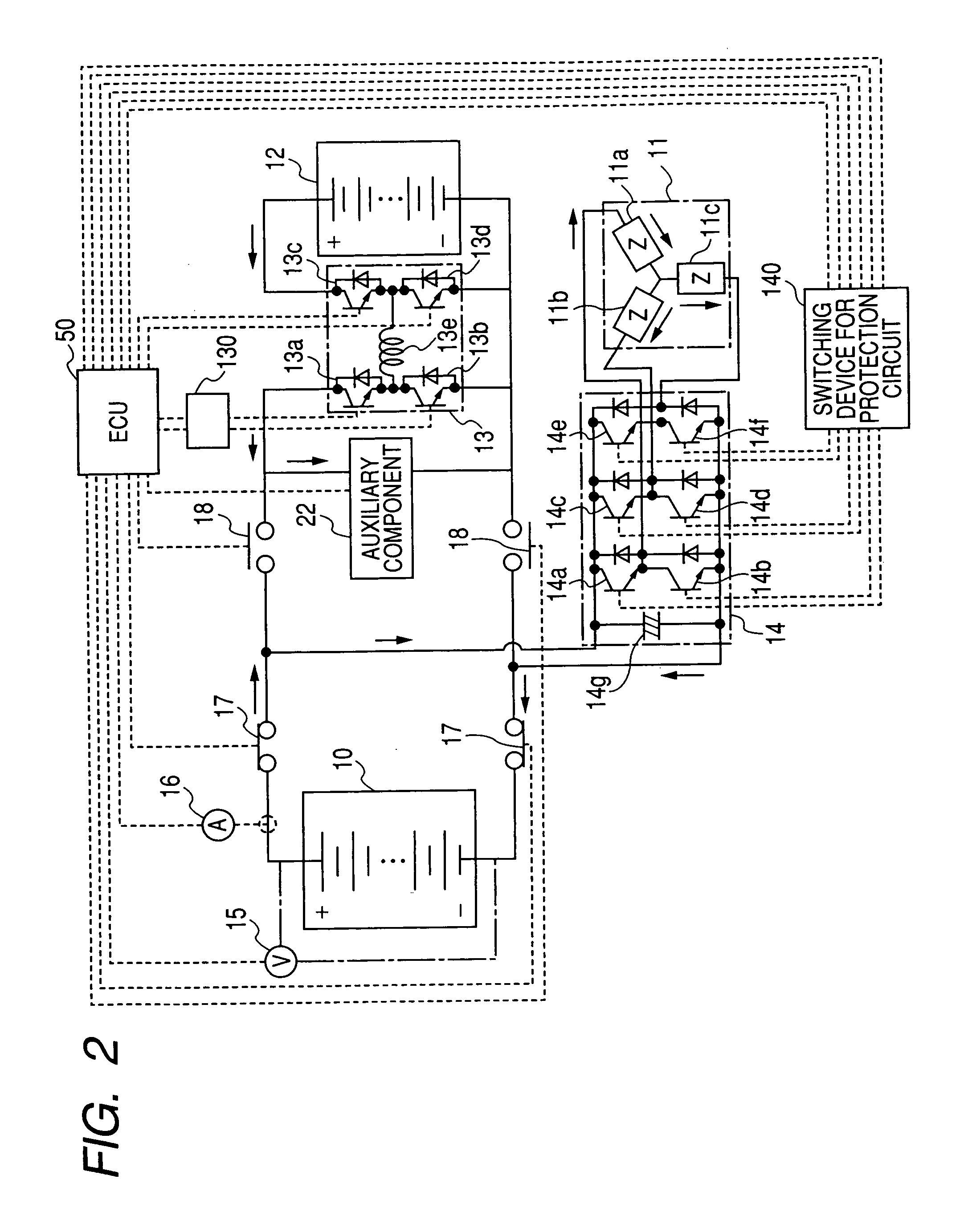Fuel cell system
a fuel cell and system technology, applied in battery/fuel cell control arrangement, electrochemical generators, transportation and packaging, etc., can solve the problems of increasing the manufacturing cost of the fuel cell system, the fuel cell often stops or does not generate electrical power, and the fuel cell system becomes a complicated configuration, so as to reduce the generation efficiency of electrical power, increase the heat energy generated in the fuel cell, and increase the efficiency of the fuel cell
- Summary
- Abstract
- Description
- Claims
- Application Information
AI Technical Summary
Benefits of technology
Problems solved by technology
Method used
Image
Examples
first embodiment
[0031] A description will now be given of the fuel cell system according to the first embodiment of the present invention with reference to FIG. 1 to FIG. 5. Following plural embodiments of the present invention will show the fuel cell system of the present invention that is applied to an electric vehicle or a fuel cell vehicle equipped with a fuel cell stack (FC stack) as an electric power source.
[0032]FIG. 1 is a schematic diagram showing the entire configuration of the fuel cell system according to first to fourth embodiments of the present invention. As shown in FIG. 1, the fuel cell system of the present invention is equipped with the fuel cell stack (FC stack) 10 that generates electrical power by electrochemical reaction of combining hydrogen and oxygen. The fuel cell 10 supplies the generated electrical power to electrical components mounted on a vehicle, such as a drive motor 11, a secondary battery 12, and auxiliary equipment (electric motor) 22. The auxiliary equipment 2...
second embodiment
[0107] Next, a description will now be given of the fuel cell system according to the second embodiment with reference to FIG. 6.
[0108] If residual water remains in the fuel cell 10 at the completion of the electrical power generation, there is a possibility that the residual water in the fuel cell 10 will be frozen in a low temperature environment. On re-starting the fuel cell 10 mounted on a vehicle in a low temperature environment, there is a great possibility to be difficult to perform electrochemical reaction in the fuel cell 10 and also difficult to start-up the operation of the fuel cell 10 even if reaction gases (Hydrogen and Air) are supplied to the fuel cell 10 because frozen water plug reaction-gas supply paths and prevents the supply of the reaction gases to polymer electrolyte films in the fuel cell 10.
[0109] The fuel cell system according to the second embodiment has an improved cold starting capability in which the warm-up operation is performed at the stoppage of t...
third embodiment
[0128] Next, a description will now be given of the fuel cell system according to the third embodiment.
[0129] In the first and second embodiments described above, the fuel cell system is so controlled that both the switching elements 13a and 13d are turned ON simultaneously when the electrical power generated in the fuel cell 10 is supplied to the secondary battery 12.
[0130] The fuel cell system of the third embodiment has the same function of the fuel cell systems of the first and second embodiments, which changes the amount of current output from the fuel cell 10 by adjusting the switching frequency while performing the ON / OFF control for the switching elements 13a and 13d.
[0131] Because it is possible to flow the large amount of current from the fuel cell 10 during usual operation, the control section 50 controls the switching elements 13a and 13d by using a high frequency (for example, not less than 10 kHz). Using a low switching frequency makes a long-period ON state of both...
PUM
 Login to View More
Login to View More Abstract
Description
Claims
Application Information
 Login to View More
Login to View More - R&D
- Intellectual Property
- Life Sciences
- Materials
- Tech Scout
- Unparalleled Data Quality
- Higher Quality Content
- 60% Fewer Hallucinations
Browse by: Latest US Patents, China's latest patents, Technical Efficacy Thesaurus, Application Domain, Technology Topic, Popular Technical Reports.
© 2025 PatSnap. All rights reserved.Legal|Privacy policy|Modern Slavery Act Transparency Statement|Sitemap|About US| Contact US: help@patsnap.com



